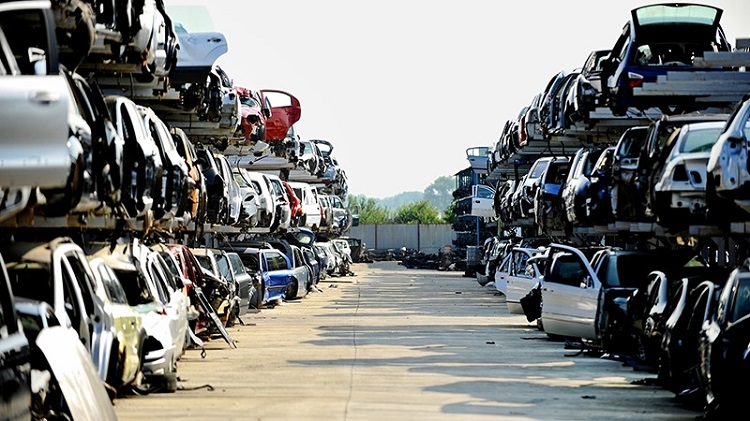Deciding to wreck your car can be a bittersweet moment. Whether it’s because your trusty vehicle has reached the end of its road or you’re simply looking to free up some space, preparing your car for wrecking is crucial to ensure the process goes smoothly. In this step-by-step guide, we’ll walk you through everything you need to do to prepare your car for wrecking, covering key aspects like removing personal belongings, handling paperwork, and draining fluids. Let’s get started!
Table of Contents
Step 1: Remove Personal Belongings
The first and most obvious step is to clear out your car. Over time, your vehicle becomes a second home, storing everything from important documents to that missing sock you’ve been looking for. Here’s a checklist to make sure you don’t leave anything behind:
- Glove Compartment: Check for registration papers, insurance cards, and any other important documents.
- Trunk: Remove emergency kits, spare tires, and personal items.
- Under Seats: Look for lost items like sunglasses, coins, or that elusive charging cable.
- Center Console and Door Pockets: Don’t forget these frequently used storage spots.
Step 2: Handle the Paperwork
Before sending your car off for wrecking, you need to manage a bit of paperwork. Here’s what you should consider:
- Title Transfer: If your state requires a title to scrap a car, make sure to transfer it to the car wrecking service. This usually involves signing the back of the title and possibly filling out a bill of sale.
- Cancel Insurance: Contact your insurance company to cancel the policy for the scrapped car. This will save you money and prevent any future complications.
- Notify the DMV: Some states require you to notify the Department of Motor Vehicles (DMV) that you are wrecking your car. Check your local regulations to ensure compliance.
Step 3: Remove License Plates
In many states, you will need to return your license plates to the DMV. Even if it’s not required, it’s a good idea to remove them to avoid any potential misuse. Plus, it’s a nice keepsake if you’re feeling nostalgic about your old ride.
Step 4: Drain Fluids
Draining the fluids from your car is an essential step in the wrecking process. Cars contain various liquids that can be harmful to the environment if not disposed of properly. Here’s a list of fluids you should drain:
- Oil: Remove engine oil to prevent leaks.
- Coolant: Drain the radiator and coolant reservoir.
- Brake Fluid: This is especially important as brake fluid is highly toxic.
- Transmission Fluid: If you’re comfortable, you can also drain the transmission fluid.
- Gasoline: Use a siphon pump to remove any remaining fuel from the gas tank.
If you’re unsure about how to drain these fluids, consult a professional or follow a detailed guide to ensure safe handling.
Step 5: Remove Valuable Parts
Before wrecking your car, consider removing any valuable parts that you could sell separately. Here are some parts that often have resale value:
- Battery: Car batteries can be sold or reused in another vehicle.
- Tires and Rims: If your tires are in good condition, they can be sold or used on another car.
- Stereo System: Aftermarket stereos and speakers can fetch a good price.
- Catalytic Converter: These contain precious metals and can be sold for a decent amount.
- GPS Systems and Car Accessories: Any additional accessories that were added can be removed and sold.
Step 6: Clean Your Car
While it may seem unnecessary to clean a car that’s about to be wrecked, a quick clean-up can be beneficial. It allows you to double-check for any personal belongings and makes the vehicle more presentable for the wrecking service, which could potentially result in a better offer.
Step 7: Contact the Car Wrecking Service
Now that your car is prepared, it’s time to contact a reputable car wrecking service. Provide them with all the necessary information about your vehicle and arrange for a pick-up. Most services will offer free towing, making it a hassle-free experience.
- Provide Vehicle Details: Be ready to give details like the make, model, year, and condition of your car.
- Arrange a Pick-Up Time: Schedule a convenient time for the tow truck to pick up your vehicle.
- Confirm Payment: Discuss and confirm the payment details. Many services offer cash on the spot.
Step 8: Final Walkthrough
Before the tow truck arrives, do a final walkthrough of your car. Make sure you’ve removed all personal items, drained the fluids, and handled all the paperwork. This last check ensures you haven’t missed anything important.
Conclusion
Preparing your car for wrecking doesn’t have to be a daunting task. By following these steps, you can ensure a smooth and efficient process, making it easier for both you and the car wrecking service. From removing personal belongings and handling paperwork to draining fluids and removing valuable parts, each step is crucial for a successful vehicle disposal. So take a deep breath, follow this guide, and give your old car the send-off it deserves.

